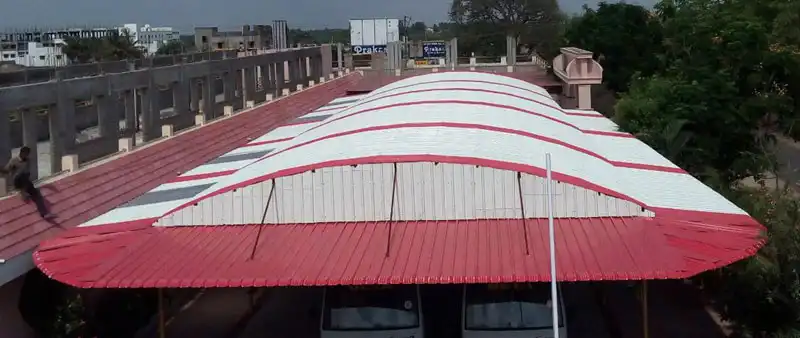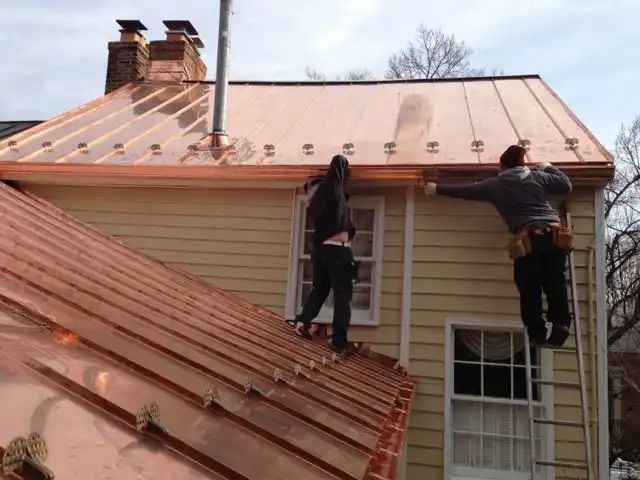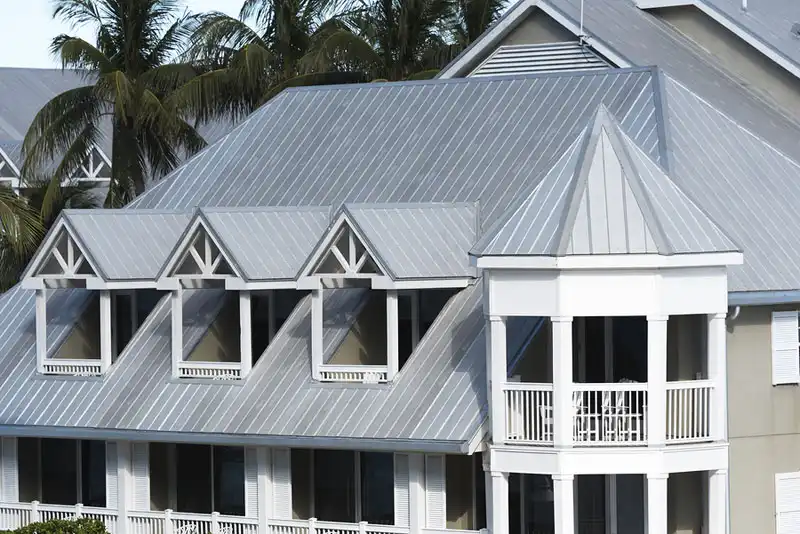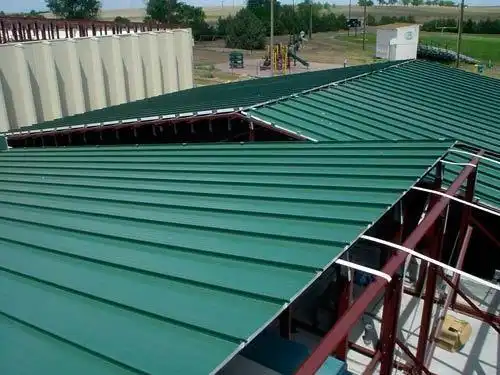Metal roofing is composed of metal pieces or tiles characterized by its high resistance, impermeability and longevity. Metal can be used as a roof covering in different ways. The main forms are based on sheet-like panels, which may be flat or profiled, and either prefabricated, or formed on-site, but metal can also be used to create shingles – formed into shapes similar to tiles, shakes or slates. Metal roofing is a popular option as they come with great insulating properties. Metal roofing provides many advantages, including the ability to withstand nearly any type of weather condition. Metal roofing comes in many different colors and finishes including the look of natural cedar shakes or stone. It has greater fire resistance and the ability to withstand a storm without damage. Metal roofing components include metal coils and sheets, panels which are roll-formed pieces of a metal coil that can even be shaped into the desired profile.
Advantages of metal roofing
Advancement in building technology and increased variety of material is fueling the need for Metal Roofing for buildings.. Its advantages include;

It has many advantages but metal roofs can be expensive depending on the quality of the metal. However, these initial costs are typically covered by the money you’ll save on energy costs. Additionally, you won’t have to replace your roof anytime soon. Improper installation can cause issues, especially denting so choose a proper applicator.
Different types of metal roofing
Aluminum roofing
An aluminum roofing provides easy maintenance, a long lifespan, and comes in a variety of different colors. Aluminum does not rust as it is resistant to corrosion, it’s an ideal material for climates with heavy rainfall and coastal applications. The outer layer of aluminum reacts with the oxygen in the environment, creating a layer of aluminum oxide, which effectively seals the inner layers of the metal from any future corrosion. It is s more malleable allowing it to be configured into more complex profiles. However, especially in simpler profiles, you need fairly heavy gauge aluminum and that will boost its cost. Aluminum is the lightest roofing material. A lightweight roof is beneficial because it puts less stress on your building as opposed to heavier materials. One of the top benefits of an aluminum roof is its energy-saving features. These types of roofs come with their quick installation feature.

Steel roofing
Steel is a fire-resistant material that lowers the risk of fire in your attic or elsewhere in the home. The durability of steel roofs makes them an environmentally friendly roofing choice; less frequent replacement. Steel is the most recycled material on earth, with products commonly composed of around 50% recycled material. It can also be reused once the roof reaches the end of its life. Steel roofs can last for 40-70 years if taken care of properly. They can withstand winds moving up to 120 mph. They’re also corrosion and fire-resistant and they’ll withstand the elements a lot better. Steel roofs absorb less heat. Its primary advantage over other materials in this list is its flexibility of use and cost. There are three primary steel roof types, Galvanized, Galvalume, and Weathering Steel. It is easily accessible and highly recyclable. As options go, because it is among the hardest metal options, it can be used in most weather environments and works well in hail and high winds. Steel roofs seal out moisture, so the development mold and mildew are less of a problem.

Cooper roofing
Copper is a natural material that has been used for covering roofs. Its longevity and energy efficiency being top priorities when designing and renovating buildings, copper roofing is fast becoming a hugely popular metal roofing option. Copper roofing is a far more beneficial material than other roofing materials such as asphalt and slate. With regular care and maintenance, the life expectancy of copper roofing can exceed fifty years. As well as being resistant to the elements and thereby less likely to be affected by rainfall, hail and mildew than other types of roofing, copper is also one of the most fireproof materials available. Copper is also highly resistant to thermal changes. It is a very lightweight material which makes it quick and easy to both transport and install. A fully supported copper roof covering weighs half as much as a lead roof and is significantly lighter than a tiled roof. One drawback of copper is its tendency to expand and contract with changes in temperatures. This can be controlled with the proper panel or shingle.

Zinc roofing
Zinc roofs are capable of absorbing carbon dioxide by locking the gas away in a special protective surface layer made of zinc carbonate. The patina is formed when zinc reacts with oxygen and water, and this protects the metal by allowing it to reform naturally when scratched by accident. This type of roofing is preferred due to its ability to be easily formed and manipulated into amazing shapes. inc has a naturally low melting point of about 785 degrees F, and only a low fuel level is needed to extract, alloy, smelt, and fabricate this metal. It is known for its impressively long lifespan and less need for replacement and repairs. Properly installed roofs made of zinc can last for centuries. A zinc roof has a non-toxic runoff, which makes the metal low in toxicity level. Also, zinc is a nature-friendly and non-corrosive metal that comes with a great percent clear water runoff.

Tin roofing
Tin is commonly used as roofing materials in Indian residential metal roofing, especially in structures where it is simply not possible to use concrete roofing. It is an element, like Copper or Zinc. These are the soft metal, corrugated roofs that can last up to 50-60 years, but which don’t offer a lot in looks or style. This type of roof is known as a template roof, and it may be made of any soft metal that is coated in tin and lead.

Applications of metal roofing
- Commercial Buildings
- Residential Buildings
- Warehouse factories
- Industrial building
- Architectural Projects
- Agricultural Buildings
Conclusion
Metal roofing comes in different types and a selection of colors. This allows you to choose the type best suited for your project. Whether you opt for a red roof or prefer shingles, metal roofing can provide the look you want. Metal roofing can reduce your costs of cooling by reflecting part of the sun’s rays. They are very versatile, durable, easy to maintain and cost-effective in the long run. A growing demand for green construction materials and materials with low lifecycle cost coupled with growing construction industry and government initiatives for green construction material are a major factor contributing to the growth of the metal roofing.
Image Source: expan.bz, vijaynath.in, azsteelroof.com, livinator.com, prestigeroofinglv.com, jaichittra.com

